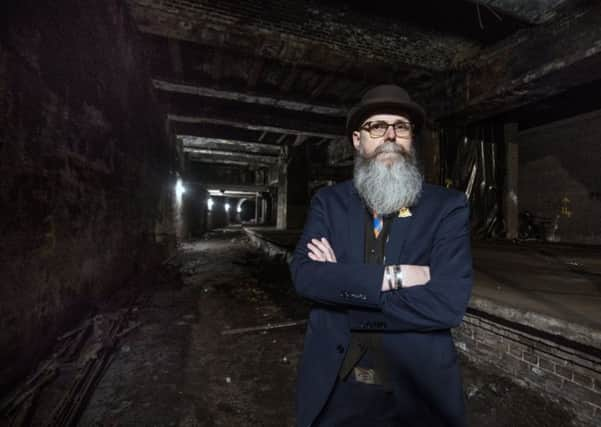One of UK’s greatest stations should make more of its hidden wonders – Alastair Dalton


Its huge glass roof, giant side windows and dark wood panelling give the expansive space an airy yet warm feel.
But while the scale of the concourse is amazing, it is what lies above and beneath that have become the station’s surprise hits.
Advertisement
Hide AdAdvertisement
Hide AdBehind-the-scenes tours that take visitors into the bowels of the complex have been a runaway success, attracting 44,000 people over the last four years.
Before they began in earnest, 100 free places during Glasgow’s Doors Open Day festival attracted an extraordinary 83,500 applications.
From the reviews, participants do not leave disappointed. Led by charismatic tour guide Paul Lyons, an unmistakable figure with his bowler hat and flowing beard, visitors are led down staircases and along corridors, shown huge grain stores, a First World War mortuary and the piece de resistance, an underground platform which has lain derelict for 55 years.
Equally awe inspiring have been tours of the glass roof, said to be the biggest in Europe, with its breathtaking views of the cityscape.
Comments left on Tripadvisor have been effusive, with almost all of the 3,200 reviewers giving the tours a top-level “excellent” rating. It is also the number one Glasgow tour.
What is repeatedly mentioned is Lyons’ focus on the human stories related to the station, such as the distraught relatives of First World War casualties – mainly women – forced to locate the body of their loved one and then find a way of removing it, often having to resort to paying people off the streets to help.
The tours have attracted everyone from Hollywood stars like Christian Slater to Sir Peter Hendy, the chairman of Network Rail, which operates the station. ScotRail Alliance managing director Alex Hynes has been another visitor.
The huge appetite for the tours clearly demonstrates the potential for future development. They could be laid on more frequently to match demand if other guides were recruited to assist Lyons, who is pretty much a one-man band.
Advertisement
Hide AdAdvertisement
Hide AdThe roof is now, alas, out of bounds for tours because of health and safety regulations over evacuation if someone fell ill, since there is no lift. But there must surely be a case for looking at the feasibility of closing that gap.
Downstairs, there have been plans for several years to restore the derelict platform, but nothing seems to have happened. It could capture the popular imagination in a big way, being not in a museum but in the heart of Scotland’s busiest station.
Network Rail has the resources at its disposal – apprentices who could lay tracks as part of their training, and engineers and other specialists who could do the other necessary work. It would be a fascinating work in progress to view.
This may start out as a visitor attraction, but the restored line could perhaps one day be pressed into use to carry passengers again as Scotland’s railways continue to grow.
But most people don’t travel by train, and anything to introduce them to the railways and see the vast improvements to the network since perhaps their last childhood memories of rail travel, by bringing them into Central Station, can only be a good thing.
The tours bring in a large amount of income. It should be reinvested in making them even better and accessible to an even wider audience.